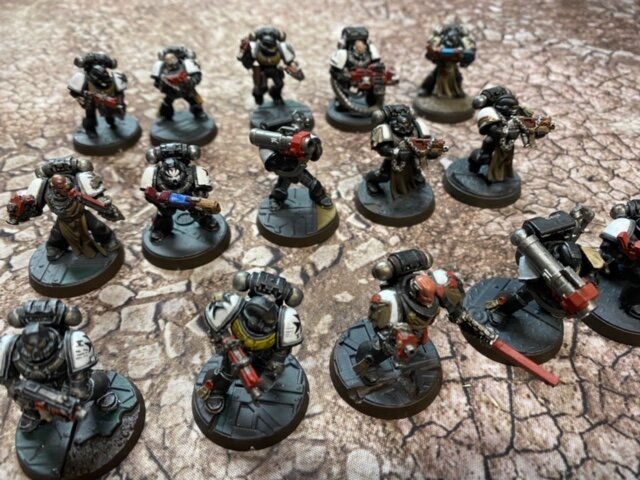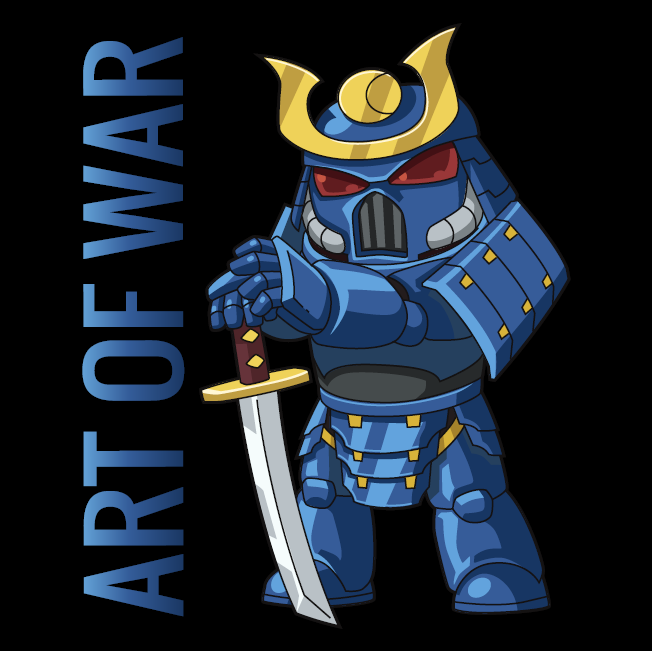Hello, and welcome to another tactical morsel by Skari, your grateful host from Art of War. This article is designed to explore the pros and cons of designing and playing a 40k army that is considered MSU (multiple small units) in an ITC setting. First, we will look at some different types of MSU armies, and then we will explore the pros and cons of playing MSU in ITC. So, let’s dive in!
Part 1 – More Boys Less Toys
The “more boys less toys” mantra is a well known saying that describes efficiency in 40k list building. An MSU army relies on taking many small, efficient units, maximizing your damage potential with many units that perform specialized tasks. This concept is in contrast to other armies that rely on buffing one or two beefier units with upgrades or psychic powers (Death Star). So, what you get are usually smaller, numerous, more efficient point-per-point units that can be all over the table all the time. There are many factions in Warhammer 40k that can be built using this style, so let’s explore some of them.
The “Las-Plas” MSU Astartes

This one is for all of you old-timers. This was a way to build a Space Marine list back in 3rd edition 40k. The main concept was to maximize the killing power of each Space Marine unit by upgrading each unit with a lascannon and a plasma gun. This was because a unit of five or ten could take these options, so instead of running ten Space Marines with one lascannon and one plasma gun, you ran two squads of five and gave each of them a heavy and special weapon. This is still true with Space Marines nowadays that run smaller squads of Intercessors or Scouts with minimal upgrades, but use them for thunder hammer delivery instead, for example. Why take ten Intercessors with only one Sergeant with a thunder hammer when you can have two squads of five, and each sarge can have a smashy, kill face weapon?
Scion Special Weapon MSU
The Astra Militarum scions are one of the armies that can pull off MSU effectively as they can run small, five-person squads with maximum effectiveness. Each command squad (small units) can have each model equipped with a special weapon like a plasma or meltagun, and every troop scion unit can have two specials for every five! This ability to pack a punch in a small unit allows the Scion player to make an army of many small units that can deal damage. However, they have the added benefit of a built-in deep strike, orders, strategems, relics, and traits that make them more effective.
Venom Spam Drukhari
If there is an army that shouts MSU at you, it is the Drukhari when they are using many units in Venoms and/or Raiders. Each small transport comes with a squad of five little dudes inside that are equipped with a blaster or shredder. And then they can be copy-pasted until you run out of points. Other Dark Eldar armies can follow the same formula with small units of Mandrakes, Scourge, or even Wyches.
Part 2 – The Good, The Bad, The They are Everywhere!
In ITC Champions Missions, you score points every turn for killing an enemy unit and for holding an objective. And every battle round the person who holds more objectives gets an additional point, and the person who kills more gets an additional point. There is also a bonus point up for grabs (usually this bonus is based on holding objectives or being close to them), and lastly, each player picks three different secondary objectives (each worth 4 points). Some are about killing things, and some are about holding things. SO… how does this interact with an MSU army?
Pros
MSU armies have an easier time taking objectives and controlling the tablespace. Usually, this is done by sacrifice; take your smaller units and send them to capture an objective, or deny the opponent an objective. You can send them to a table quarter or into the middle of the table for King of the Hill, for example. You can use them to move block enemy units and screen out against deep strikers. The key here is that EVERY unit in an MSU army is designed to be expendable. Once you commit the small unit to do their one job, you can sit back and watch them die the next turn, and then you have another unit in your army that can step up and do the same thing again! This means that losing a small unit (like a Kabalite squad worth 30 points) can be done many times in a game, and it does not take any of the capability away from your army strategy in general.
These armies typically have excellent built-in mobility (like Impulsor spam, or deep strike Scions, or Venoms, for example). In ITC, an MSU army does very well with the holding ground and taking objectives secondaries. They will usually be well-suited to taking the bonus point multiple times during the game as you can send these small units to their deaths simply to get points. This also means that the army is usually comfortable going first or second, as taking casualties is part of how the army functions, and losing some of these units at the start of the game does not normally cripple those functions. So if you want to play an MSU army, play to its strengths and focus on those positional objectives and bonuses.
Cons
MSU armies bleed kills, and this is one of the main cons in the ITC. The enemy army can almost always be guaranteed the ‘kill’ and ‘kill more’ primary objectives every turn. This can put a lot of pressure on the MSU player to be hyper-aggressive with the objectives as they need to offset these easy points with a ‘Hold More’ and hopefully the ‘Bonus’ point every turn or most turns. It also makes the Butchers Bill secondary usually very easy to get as well, and since a lot of MSU armies come inside of transports, you are then also giving away the Big Game Hunter points for that secondary. It is not easy to mitigate these point bleeds in the ITC format, and many of the top competitive armies in the ITC, such as the BroLevi Iron Hands or the Grey Knight Paladins lists, are built to deny kills. These sometimes deny a simple kill for the point in a turn, making these points a lot harder to score against them. This is something to keep in mind when playing these MSU lists: how are you going to keep up in the kill game?
Conclusion
Playing an MSU army in the ITC format is not easy, and the results that it gives you will be representative of how adept you are with the playstyle. I hope you take this information and apply it either to beat the next MSU army that you will face OR to put pressure on the army strengths and use them to win your next ITC game. Something that has helped me consistently win with this style of army is to include secret durability into the list. Because it’s so easy to lose the kill game, I try hard to make sure the units in my army don’t get killed, hence the use of Wyches (and the shard nets) for example, so that I can prevent the enemy from shooting at me. So, think about ways you can fit that into your list and reach out to me, leave a comment, and share what your experience has been!
Contact me for coaching and list building advice here on the Art of War, and let me help you improve your game. Thanks a lot for reading, and I shall see you on the next Skari Tactical Tidbit (or morsel in this case).
Skari – out.
And remember, Frontline Gaming sells gaming products at a discount, every day in their webcart!

